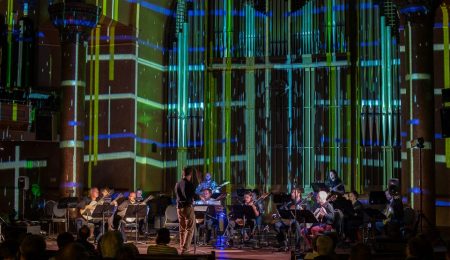U of O student exhibit puts art at the center of a scientific debate
The University of Ottawa’s department of visual arts hosted an art exhibition on Dec. 1, capping off a semester of preparation by the project’s student curators. Titled Transient, the event showcased pieces by local artists that analyze humanity’s relationship with itself and the earth in the Anthropocene epoch.
The Anthropocene is a recent period in earth’s history where human development and technology is the primary driving force behind environmental and geological changes on a global scale.
The exhibit focused primarily on the impact that industry and human development have had on the environment, and by extension our perception of the world. But it also had an element of optimism, championing the idea that the arts and sciences can work together to confront global issues.
“The Anthropocene doesn’t just affect artists; it doesn’t just affect certain people—it affects us all. We as artists hope to point to various problems and issues and articulate them somehow,” said Atticus Gordon, a third-year student in the U of O’s fine arts program and a research technician in the department. “Whereas the sciences are a more hard and concrete way to deal with the issues we raise as artists, there is a nice back and forth between the two.”
This spirit of cooperation and compatibility is also demonstrated through the event’s unique venue—the department of chemical engineering pilot plant, a small-scale industrial lab.
“So you will see plastic is a recurring theme in a lot of the artwork as kind of the apex of manufactured living,” Gordon said. “But here, in this lab, you have experiments in the works to create new plastic polymers that don’t rely on oil. So there really is some nice synergy between the two, thematically and literally.”
The idea of arts and sciences having contrasting approaches to the same issue was prevalent in many of the pieces. In the sculpture “Time Capsule for Transporting a Fallen Ash Tree Into the Future,” a giant artificial seed examines the absurdity of innovation and the idea that all problems can be solved by technology and technology alone.
The piece was created by David Mcdougall, a professor in the visual arts department and sculpture technician at the university.
“The piece centres around the idea of environmental degradation and how we use technology as a way to counteract degradation … so it’s a time capsule to bring this dead ash tree into the future,” Mcdougall said. “So often our solutions to environmental catastrophes are technological solutions. We have this focus on preserving instead of coming up with real, meaningful social change or policy to solve them. So this time capsule is a machine of absurdity, it’s the promise that technology will preserve what we still have but what we still have is this pile of dead wood.”
Mcdougall went on to stress the importance of humanities in addressing problems that affect all of us and reiterates that sciences cannot work in a vacuum.
Transient is just one of many exhibitions that the department of fine arts produces every semester. The department seeks to further this interconnectedness with the sciences in future shows.





